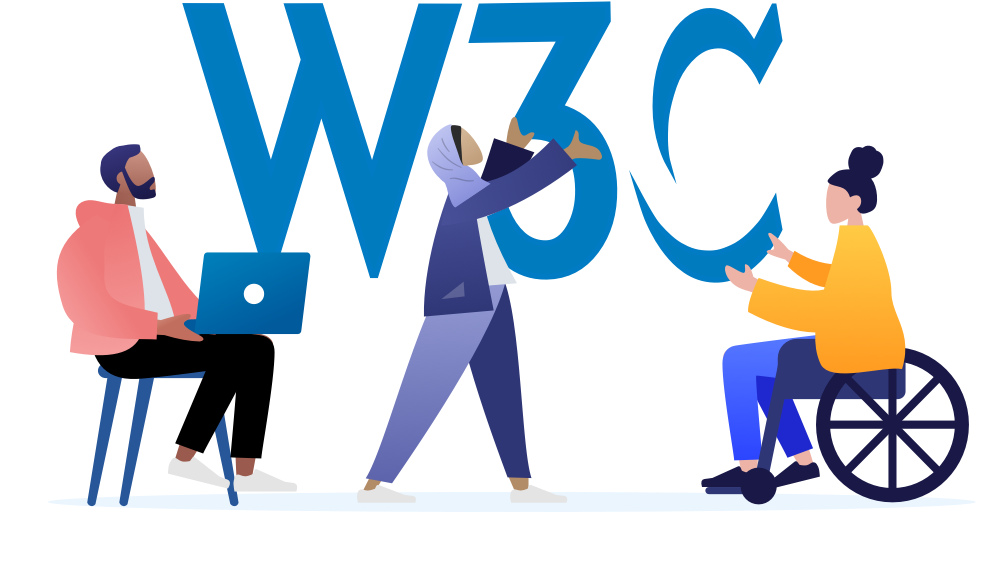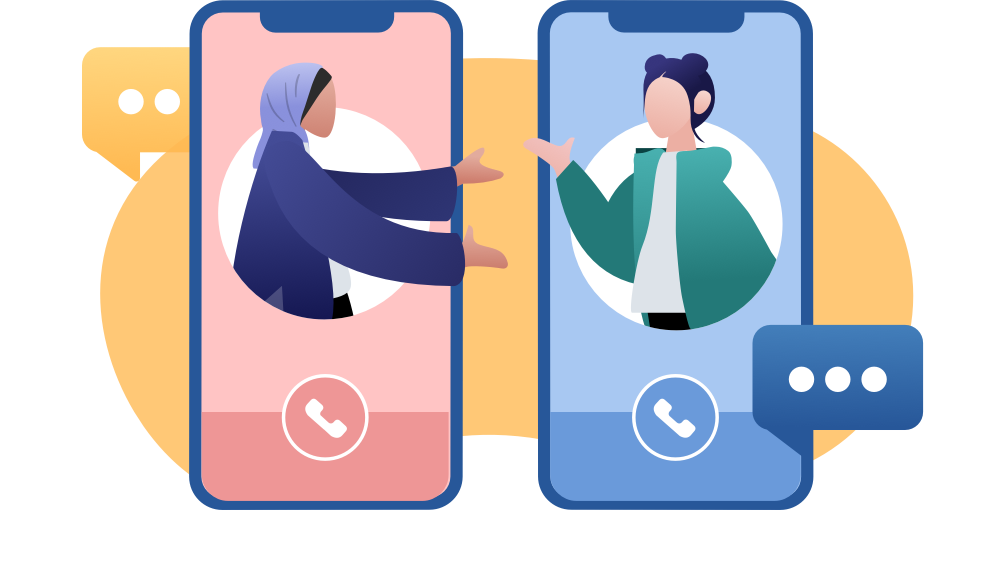Marie Manandise, Front End Team Lead at Studio 24, shares behind-the-scenes insights.
In February 2020, Studio 24 was awarded the contract to redesign the website of the World Wide Web Consortium (W3C). Working for the standard-setters in our industry means we are facing unique challenges: we have to work to an unprecedented level of excellence, whilst the whole community is looking over our shoulder. In this article, we offer behind the scenes insights on what it is to work with W3C and how that experience is making us more confident and more thorough than ever in our approach to building websites.

The World Wide Web Consortium (or W3C) is the prestigious, international organisation that sets the standards for all things web. It was founded by Tim Berners-Lee, the inventor of the web, in 1994. It is thanks to W3C that you can read this article from one browser on your mobile phone, another browser on your laptop, or get it read by a screen reader. They set out the standards that all actors of the web need to follow to keep it universal.
We are Studio 24, a modestly-sized digital agency based in Cambridge, UK. So, when in February 2020 we learned we had won the contract to re-design the W3C website, we had to pinch ourselves and make sure this was not a dream. A year and 10 months on, we are getting close to launching the beta version of the site. In this article, we explain the challenges we face working with the standard-setters in our industry and how we are using this unique opportunity to improve our work and ways of working.
W3C being the body that defines the standards of web technologies, their website has to lead the way for the industry. When it comes to this project, we can’t get away with trying to follow standards and best practices, we have to follow them.
Many people I spoke to are surprised that W3C did not take the redesign of their website internally. Surely they have the skills and knowledge. But here is the thing: even at W3C, there isn’t a godlike, omnipotent individual (or group of people for that matter) that knows all the standards and best-practices; each is a specialist in their area (accessibility, internationalization, security, etc). So a great deal of our work consists in compiling and distilling all that expert knowledge and experience into designs and code.
What’s more, websites are not only about tech. When it comes to user experience design, the W3C team needs guidance.
Those of you who work in digital agencies will know that websites are always the results of compromises and prioritisation: accessibility, performance, visual design, search engine optimization… You need to pick your fights and set priorities based on the impact on user experience, business needs, and time and budget available. In the course of this project, although we set a priority order to the various aspects of web design, they still all have to be delivered at what feels like an unprecedented level of excellence.
The exercise in compiling standards, debating best practices and weighing them against each other, whilst including exceptionally precise technical feedback from the client, had to be performed repeatedly. This is well illustrated in this article summarising the process of building the main navigation.
This way of proceeding takes a lot of time and creates loads of communication overheads. (You won’t be surprised to hear the project is taking longer than expected!) Even more so as W3C fosters a culture of consensus. We have a few specific points of contact that centralise all members’ feedback and make final decisions, yet there can be a lot of feedback and debate leading up to decisions.
Patience, respect for the expertise of the client, a willingness to do the right thing, and taking pride in the result of our hard work were key in helping us push through a process that some of us rightfully described as ‘treading through treacle’.
Maintaining strong relationships, both in the team and with W3C, is also essential to cope with such a long and intense process. Personally, I consider it a huge success that we’ve managed to keep things genuinely pleasant and light in this context (which is compounded by the effects of a global pandemic). To me, arriving this far on such a journey with a smile on everyone’s face is the hallmark of professionalism.

Another challenge of this project comes in the form of scrutiny. One of the requirements is, as per the original request for proposals: a “willingness to work in the open: to publish and explain your work as it is completed in phases and collect and accept feedback”.
The code repositories we work in are public (only one of them is still temporarily under wraps) and we document all our decisions and progress in a ‘working in the open’ website. We also released the W3C design system as soon as it was in a good enough state to do so (i.e. please be nice, it is still work in progress). Properly documenting code and decisions so they are ‘public ready’ also takes time.
The web community is a pretty vocal and passionate bunch and easily takes to social media to express opinions. Overall, the feedback we received has been positive, yet we did have to address some negative reactions. For example, our decision not to use WordPress was controversial, which we responded to with professionalism and patience, clearly explaining our decision on CMS selection and how we got there. This requires a significant amount of time and attention. And most of all, it is disruptive for an organisation like ours that doesn’t have dedicated PR resources.
We learned to hold off on personal responses and co-ordinate as a team, making sure we are coming across as ‘the voice of Studio 24’. We got into the habit of thoroughly peer reviewing anything we write publicly and get some of it vetted by the W3C communications team (including what you are reading now).
Beyond the logistics of it, we also had to cope with the emotional impact of public scrutiny. We’re a bunch of mostly introverted people at Studio 24. Personally, I found that even positive reactions are (at best) distracting. Again, being there for each other and building good quality relationships is essential in that regard.
To the web developers among us, W3C is awesome. And by that we don’t just mean ‘great’, we literally mean ‘awe-inspiring’. At Studio 24, we’ve always tried hard to follow web standards. Now we’re in a position where we have to redesign and build the website that introduces these standards to the world. As you can imagine, all of us have suffered from impostor syndrome at one point or another. In the words of Alan, our Hosting and DevOps Lead, working for W3C is ‘like trying to teach Henry Ford about cars’.
Nicki, our Lead Front-end Developer, had to present our CSS approach to the W3C team, knowing Bert Bos (the co-inventor of CSS) was in the audience. As mentioned above, we slowly came to realise our role as ‘compilers of expertise’ and the value that role brings. That didn’t make that particular experience any less nerve-racking.
At first we were surprised by the level of trust members of the W3C team put in us. Over time, as we worked closer together we came to the (now obvious) conclusion that, however prestigious the institution, it’s still a bunch of people. Just like at Studio 24. We each have our contribution to make in our area, and we each need guidance in other areas.
Now more than ever, building websites properly requires collaboration and ways of channeling that collaboration. If you are a freelancer, this may take the form of reusing code that has been thought through by a community. If you are W3C, it means gathering together experts to define standards… and sometimes seeking advice from a digital agency.
And if we still sometimes feel like imposters, we ask ourselves: who else could have done this? Sometimes you just reach a level at which anyone would be ‘winging it’. The wonderfully professional agency that could have taken this project without breaking a sweat is a myth.
Redesigning the W3C website is the opportunity of a lifetime. As Simon, our Managing Director, put it: “In the 20-year history of Studio 24, it feels as if we’ve been leading up to a project like this.”
It’s a journey. A longer and harder one than we expected. There’ve been bumps in the road, and it didn’t help that a pandemic reared its ugly head to compound the challenge. But we’ve managed to keep things pleasant and fairly light. And most importantly, we drew some substantial takeaways from the experience.
First of all, we gained confidence. After all, we have been giving advice to what must be the highest authority in our industry. We are a lot less shy applying for ambitious projects for which we might not be a perfect fit. And again, that is because we now realise that beyond a certain level, a 100% match is unlikely to exist. We got used to stretching beyond our comfort zone and managing uncertainties and grey areas.
The W3C kept us on our toes. Working to a high level of excellence, having to spell out all our decisions for them and the public, forced us to settle a whole series of debates around our best practices in the studio. Our working in the open website and the design system are two resources that will impact all our future projects and clients. We are currently in the process of extracting that know-how and converting it into sets of standards and tools to be used consistently by all our staff. We also hope it is invaluable to the community.
We have honed our communication skills. No more ever so wishy-washy, partial explanations. It is clear to us what is a standard – a rule that is not debatable – and what are best practices – recommendations that are not set in stone and need to be prioritised. We learned to be aware of our personal biases and not let them cloud our decisions. We learned to pursue debates through to the end. We basically gained in maturity and professionalism.